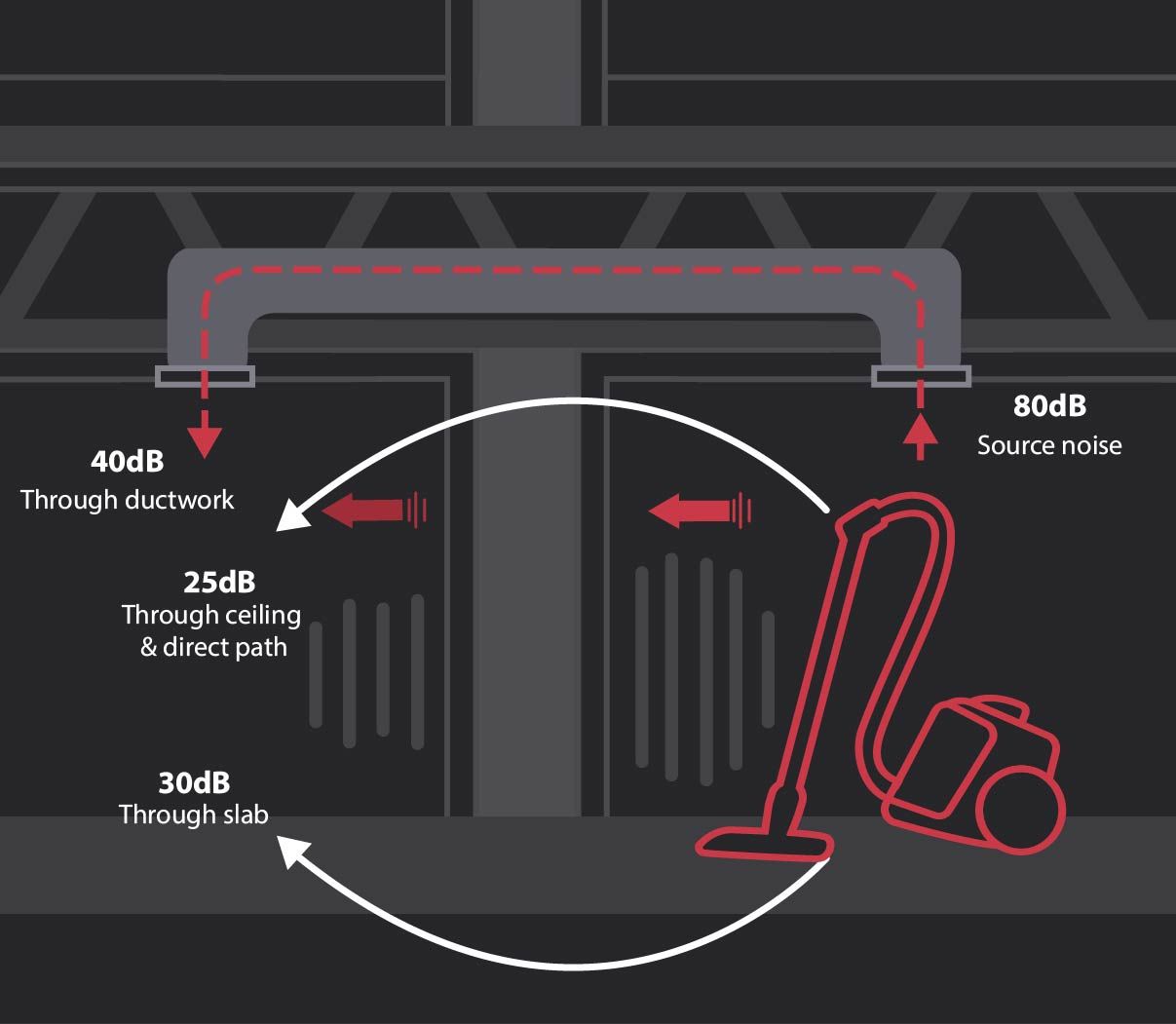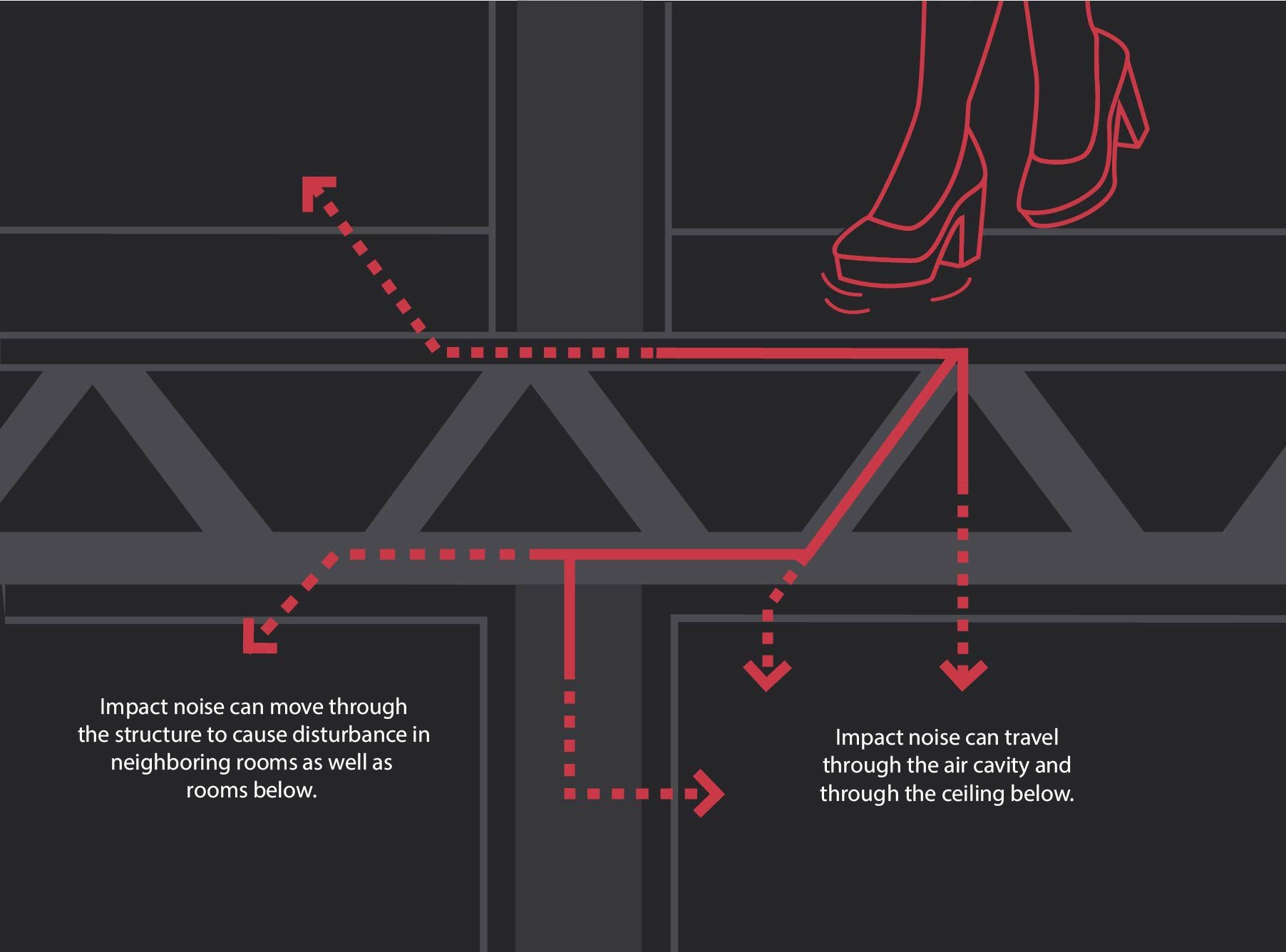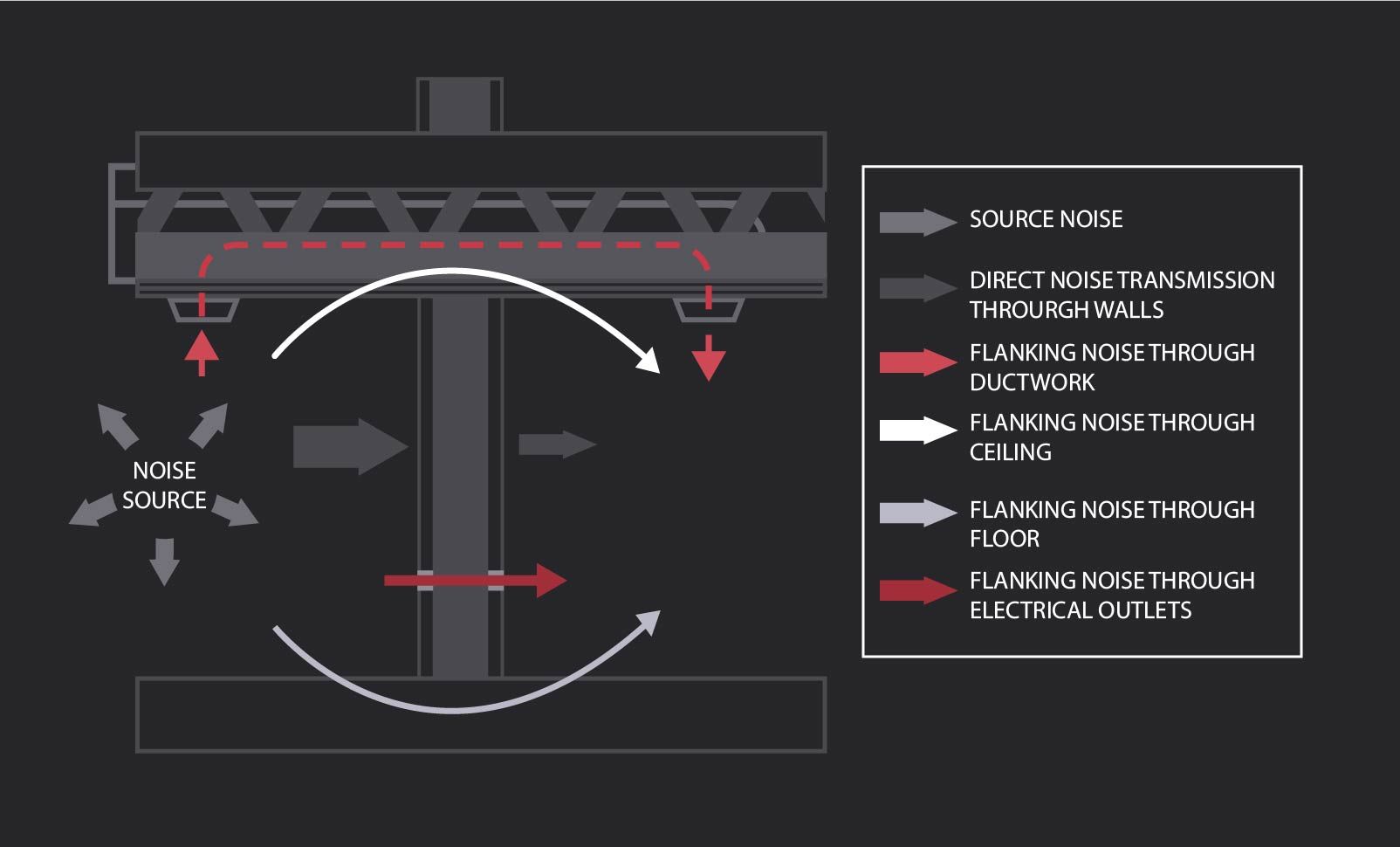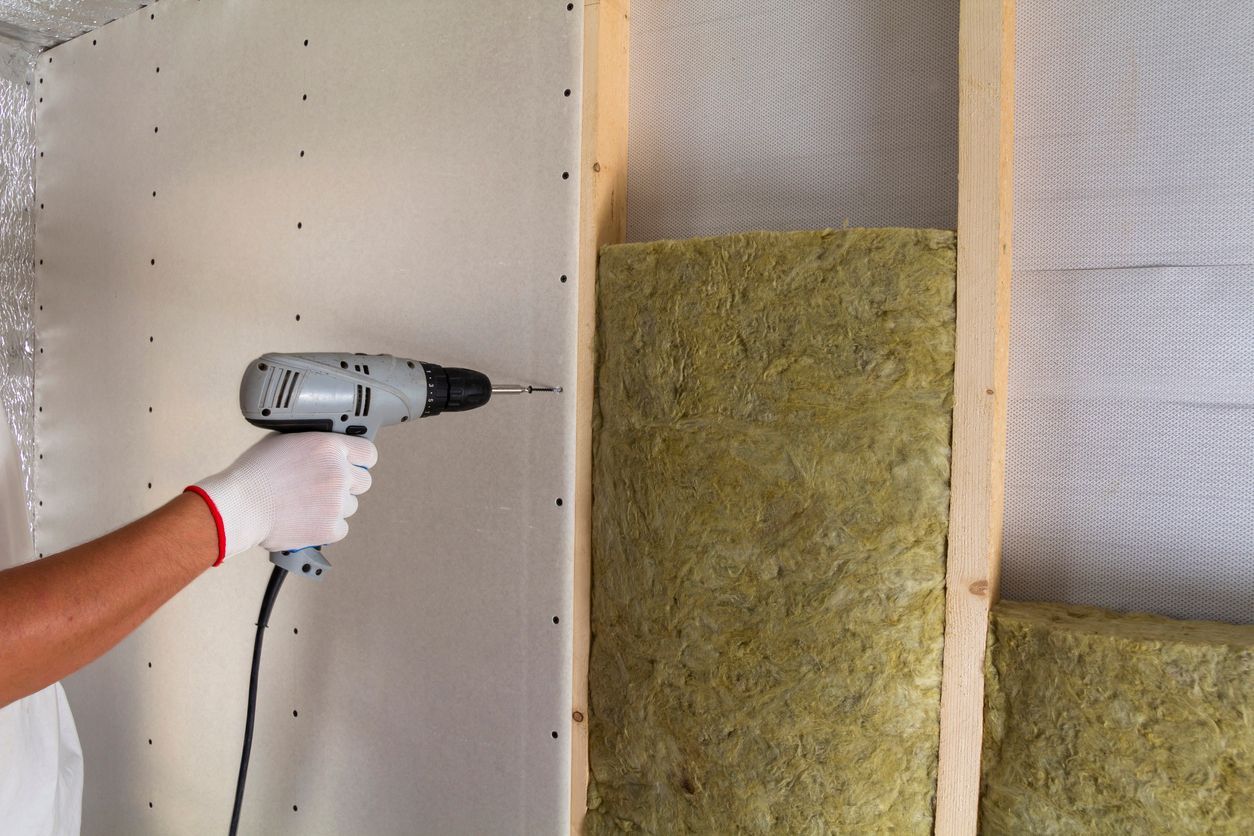Tired of noisy neighbors or trying to avoid being one? No matter why you are looking into how to soundproof a wall, this is where you’ll find the best wall soundproofing methods.
- When Is Wall Soundproofing Necessary
- Common Methods
2.1 Adding Mass
2.2 Recycled Cotton Batts
2.3 Sound Isolated Systems
2.4 Double Walls
2.5 Resilient Channel System
2.6 Expanded Foam Sprays - How To Build A Soundproof Wall
- How To Soundproof An Existing Wall - Step-by-Step
4.1 Find The Noise Source And Weak Points In The Walls
4.2 Fill The Cracks
4.3 Focus On The Small Areas Of The Wall
4.4 Fix All The Sound Leaks - Detect All The Noise Sources With Decibelpro.App
- Popular Ways to Soundproof a Wall That Don't Work
6.1 Soundproof Paint
6.2 Soundproof Wallpaper
6.3 Foam Rubber
6.4 Carpet On The Wall
Read on to find the best way to soundproof a wall and get your all-needed peace and quiet.
1. When Is Wall Soundproofing Necessary?
You may want to know how to soundproof a wall for several reasons. The most common of these is perhaps noisy neighbors. Since most of us live in noisy, crowded cities, getting a little peace is sometimes hard.
It almost always feels like the neighbor’s TV or audio volume is too loud. Finding a way to get rid of this nuisance is ideal.
Another popular reason for wall soundproofing is building a sound studio either for recording or listening to music. Audiophiles or sound professionals have a hard time finding appropriate environments for their passion.
That said, sound travels through the air. However, it also travels and vibrates through:
- structures such as walls and ceilings
- air gaps
- cracks in walls
- spaces under doors
- spaces between windows
- ducts
- outlets
- vents
- light switches
Here is a diagram showing how airborne noise travels:

And here is a diagram showing how impact noise travels:

This is the reason soundproofing is so important. Because noise can travel in so many ways.
Soundproofing is used for blocking sound from traveling where it shouldn’t. Such as outside or inside a home or a music studio.
2. Common Soundproofing Methods
There are several ways to soundproof a wall. Be it an existing wall, a wall between apartments, or a newly built wall.
Some common wall soundproofing methods have been around for a long time. Others are modern solutions to an old problem.
To give you your best options for wall soundproofing, we’re going to look into all of them.
Adding Mass
Adding mass is a common and cheap soundproofing method. It works by adding form to walls, floors, or doors to block sound.
Different materials can be used to add mass. Common choices include:
- thick blankets
- curtains
- absorbent panels
- carpets
The downside of this soundproofing method is that it’s not aesthetically pleasing, and it may cause the room to get very hot.
Recycled Cotton Batts
Recycled cotton batts reduce noise levels by absorbing sound. They are made from cellulose fibers such as used denim or other clothing.
The soundproofing fibers made into batts are easy to install in walls, floors, and ceilings and do not require special tools. They are a good soundproofing method that does not break the bank and offers good acoustic properties.
Sound Isolated Systems
Sound isolation systems are considered one of the most efficient soundproofing methods. They can completely isolate a room from another room. They do so by creating a space between the drywall and the studs where sound usually travels through. This absorbs any vibrations and prevents noise from traveling.
Sound isolation systems come with special dampeners and neoprene foam cushions to prevent any vibration and also increase wall strength.
This method is not as cheap as the previous ones but provides excellent soundproofing properties.
Double Walls
By building double walls, you can create a room within a room and get amazing soundproofing. This method entails joining together two wall frames with a gap between them. This leads to decoupling and preventing any vibrations, thus blocking sound from traveling through.
This double stud wall soundproofing solution is ideal for music studios.
However, the downside to this soundproofing solution is that it is difficult to build, more expensive, and takes up a lot of space.
Resilient Channel System
A resilient channel is used for isolating one drywall panel from another. It is a spring track made of metal that reduces sound transfer.
The downside of this soundproofing method is that it’s rather difficult to install.
Expanded Foam Sprays
Although normally used in construction for thermal insulation, spray foam also has soundproofing properties. Polyurethane foams can fill in cracks and gaps that noise would otherwise travel through.
It is quite cheap and not very difficult to apply. However, it must be applied properly to create sound insulation. A proper application must include any interior or exterior areas that noise travels through.
3. How to Build a Soundproof Wall
When it comes to how to build a soundproof wall, you will need patience.
First of all, you will need to choose dense, sound-absorbing materials. One option to increase density is to choose a thicker type of drywall.
The wall must have two separate layers with enough space in between them. This is referred to as decoupling and it will block sound from traveling by absorbing or reflecting its energy.
As for stud placement, you will need to build two rows with space in between them. One along each interior side.
For added wall soundproofing qualities, you can use a damping compound between the layers of the wall. Alternatively, you can use insulating materials such as fiberglass, spray foam, or cotton batt.
4. How to Soundproof an Existing Wall – Step-by-Step
Soundproofing a wall doesn’t have to be very costly or too complicated.
Sometimes, all it takes is a careful assessment of weak points or sound leaks. Most homes have certain areas that are not completely sealed. In these cases, the fix is easy and cheap. Plus, it won’t take up too much of your time.
The image below shows all noise can travel. That’s where you’ll need to focus your attention:

Read on to find out how to soundproof an existing wall.
Find the Noise Source and Weak Points in the Walls
Before you start soundproofing, you will need to identify where the noise is coming from. Any weak points can cause noise to travel, so you will need to find them first.
For instance, the noise could come from your upstairs neighbor. In this case, you should consider soundproofing your ceiling.
If the noise is coming from outside, consider soundproofing your doors and windows first.
Identifying the noise source is also important because it will dictate how much soundproofing you will need. If you’re only trying to block out distant traffic noise, it will be easier. If you live near a construction site with constant loud noises, you will need more extreme soundproofing solutions.
Fill the Cracks
Caulk or sealant are great options for filling in any cracks that noise might be coming in through.
You can find cracks in room corners, walls, or door and window frames. Use an acoustic sealant to seal any cracks and prevent noise from entering or exiting the space.
Focus on the Small Areas of the Wall
To keep your budget in check, start small. Find small areas of the wall that you can apply the above soundproofing methods to in order to keep sound from escaping or entering the room.
Room corners and window and door frames are the most common areas you should focus on.
If thin walls are the problem, try placing bookshelves or a piece of tall furniture to block sound. A little rearranging could work wonders.
Fix All the Sound Leaks
Another method to soundproof a room is to identify and fix sound leaks. To do this, check for gaps in outlets, light switches, door or window frames that are loose.
Then, seal all the gaps you find with acoustic sealants, strips, foam, or even duct tape.
5. Detect All the Noise Sources with Decibelpro.App
Using the Decibel Pro app you can conveniently identify any noise sources. It is a sound level meter app that you can install on your phone or tablet to get professional noise level readings.
Using Decibel Pro, you can quickly find any sources of noise that could become a nuisance and require soundproofing. Simply install the app, place it as close as possible to the noise source and see the decibel level right on your screen.
6. Popular Ways to Soundproof a Wall That Don't Work
Just like with any other common issue, there are a few “common myths” about soundproofing. Sadly, this means that some popular recommendations for wall soundproofing are actually not quite efficient.
Soundproof Paint
Soundproof paint promises to absorb noise and create silent environments. However, its efficacy is rather low. Soundproof paint can reduce noise levels by 30% at most.
Soundproof Wallpaper
Acoustic wallpaper is another popular soundproofing solution. Sadly, just like soundproof paint, it doesn’t do much to reduce noise. It could be useful to you if all you want it to reduce distant traffic noise or low background noise. However, it does nothing to block out noise.
Foam Rubber
Foam rubber can absorb or reduce sound, but it doesn’t block it. Therefore, its soundproofing qualities are limited.
Carpet on the Wall
The carpet on the wall myth is probably the most common of all soundproofing myths. If you’ve struggled with noisy neighbors, you’ve most likely heard at least one person recommend that you hang a carpet on the wall.
Unfortunately, this soundproofing solution is not efficient. While it may dampen the sound coming from right behind the wall you are covering with it, it won’t do a very good job overall. Moreover, it will cause the temperatures in the room to increase, which will not be so pleasant in the summer.



